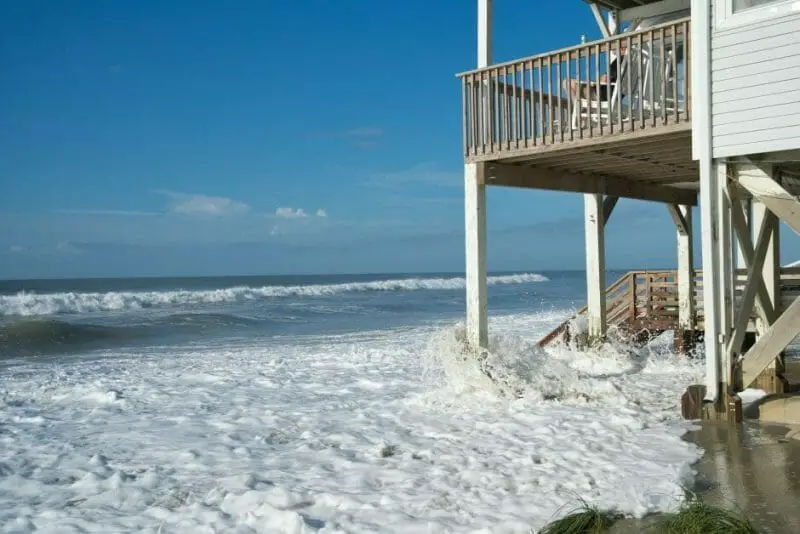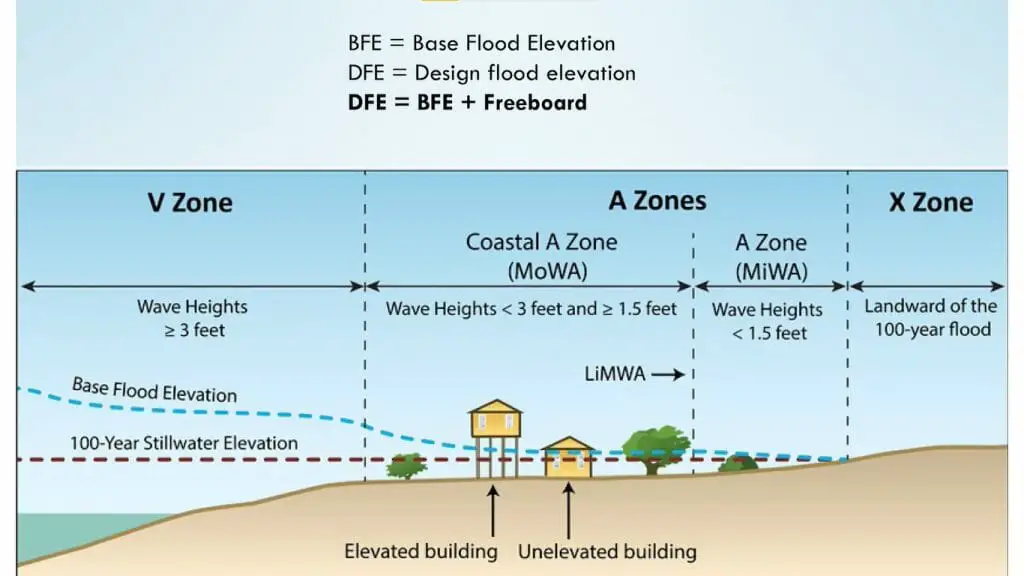Placing buildings at higher elevations is the best protection against flood damage.
New buildings must be constructed 1 to 2 feet above the base flood elevation. This is the minimum elevation requirement for new or improved buildings to be qualified for flood insurance applications. Still, this minimum elevation is subject to change depending on the state or local floodplain management regulations.
Find the exact elevation above the base flood elevation you need by reading below.
What are Base Flood Elevations?
Base Flood Elevation (BFE) is the elevation above the mean sea level to which flood levels are expected to rise.
Government agencies and construction companies use BFE as the reference height for constructing buildings. You should elevate buildings and other structures above the BFE value. If not, the building may not qualify for flood insurance applications.
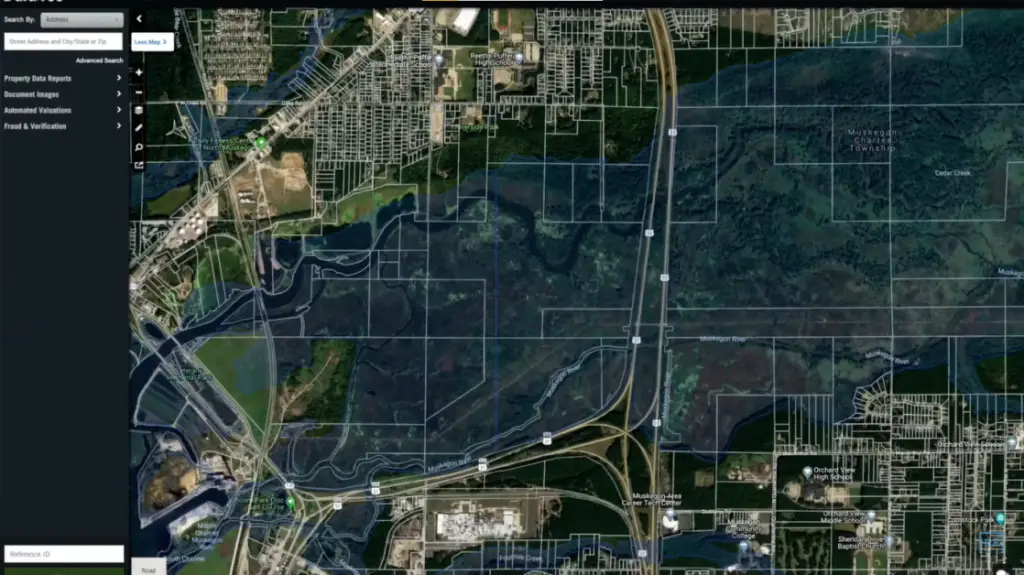
Current building safety codes require new buildings to be at least 1 foot above the base flood elevation. Base flood elevations are determined by the flood zone type the property is located on. [1]
Understanding Flood Zones
Flood zones are special flood hazard areas mapped by the Federal Emergency Management Agency (FEMA).

The main usage of flood zones is to identify the areas that are geographically at a higher risk for floods. It is categorized into four main types. Flood zones are used by government agencies, construction companies, and insurance providers to help determine which properties are located in flood hazard areas.
1. Moderate to Low-Risk Areas
This category is split into two main sub-types: Moderate Risk Areas and Low-Risk Areas
Moderate Risk Areas are labeled as Zone X.
It is usually recognized as the shaded areas in flood zone maps. These are areas of 500-year floods or areas with a 0.2% chance of experiencing floods annually.
Low-Risk Areas are also labeled as Zone X.
Low-Risk Areas are sometimes called ‘Areas of Minimal Flood Hazard’ by other maps. These areas are identified by the lack of shading within their boundaries. These areas are located on higher elevations than the 500-year flood plain. Low-risk areas have a lower than 0.2% chance of experiencing floods annually.
2. High-Risk Areas
High-Risk Areas are labeled as Zone A.
High-Risk Areas are areas within the 100-year flood plain (sometimes called 100-year flood or base flood). These areas have a 1% chance of experiencing a flood in any given year. This percentage may seem small, but properties within this zone are prone to floods due to their proximity to bodies of water.
Zone A is typically written as “AE-#” on flood maps.
The “E” symbolizes the elevation level assigned to that area. The number after that is the Base Flood Elevation for the given area.
3. High Risk – Coastal Areas
High Risk – Coastal Areas are labeled as Zone V.
These areas are considered to be at the highest risk for floods. Properties located on beach-fronts and other coastal areas are classified under Zone V. These flood hazard areas have a 26% chance of flooding every 30 years.
Zone V is typically written as “VE-#” on flood maps.
The “V” denotes the velocity hazard or “expected wave action” of the area. These are waves generated by the sea that has enough force to damage buildings significantly. The number after “V” is the base flood elevation of the area.
4. Undetermined Risk Areas
Undetermined risk areas are labeled as zone D.
These are areas with possible yet undetermined flood risks. These are flood hazard areas that have either not undergone flood hazard analysis or have incomplete flood hazard data.
Assistance from a licensed land surveyor, engineer, or certified architect is needed to determine the base flood elevations of these areas.
Required Building Elevation
Generally, the minimum building elevation is 1 to 2 feet above the base flood elevations.
For residential buildings, You must elevate newly constructed ones by 2 feet, while substantially improved buildings must be elevated by 1 foot. For non-residential buildings, both new and improved buildings must be elevated by 2 feet.
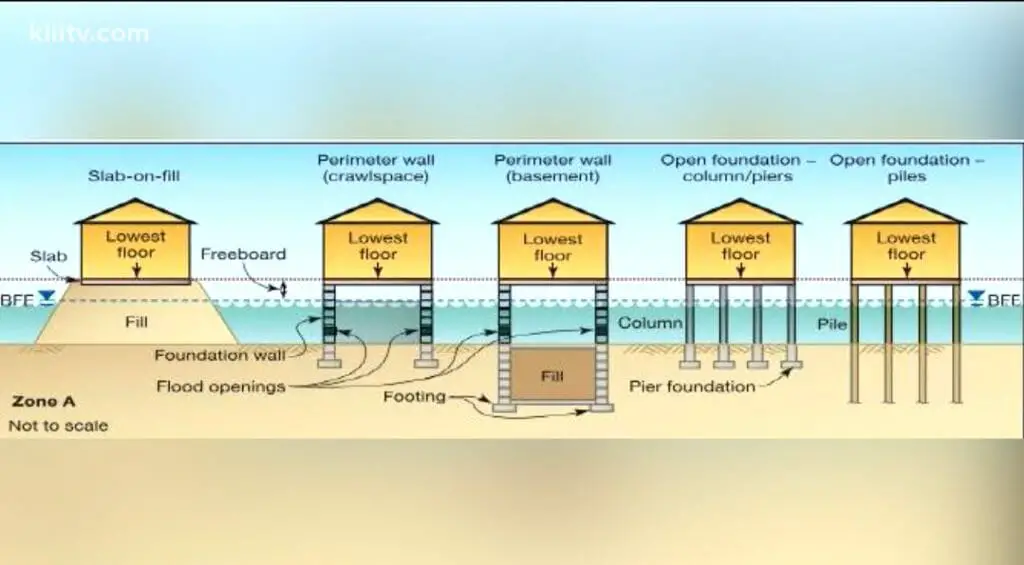
However, building safety standards now follow the minimum elevation set by the BFE plus the additional 1 to 2 feet.
You can determine the minimum elevation of the BFE by identifying which flood hazard areas your property is located on. For example, if your property is located in an “AE-8” flood zone. The building must be elevated at least 7 feet above the mean sea level.
How do you find out the elevation of your property above the mean sea level?
An Elevation Certificate is needed to determine the elevation of your property above the mean sea level. This can be obtained by hiring certified surveyors to identify the elevation of your property. Some properties may already have this since it is a basic requirement for building construction.
Once you have information on the property’s elevation above the mean sea level, the next step is finding out how high I have to build above the base flood elevation.
If your residential property is located on an “AE-8” flood zone and is 6 feet above sea level, you must build at least 3 to 4 feet above the ground. This computed elevation is called the Design Flood Elevation (BFE). The first additional 2 feet is from setting the elevation to be level with the BFE. The other additional 1 to 2 feet is from the required minimum elevation.
In some cases, you’ll need to build above the minimum elevation set by the BFE.
State or local jurisdictions may have different floodplain management regulations. They can set a specific minimum elevation based on local conditions and the special flood hazard area it is located on. Locals are required to follow this elevation instead of the BFE. In addition, if you’re planning to build critical and essential facilities like hospitals, it should be higher than the minimum BFE elevation.
It’s best to consult with your local building codes to confirm the required building elevation in your area.
Is Building Above the Base Flood Elevation Required?
The building above the base flood elevation significantly reduces the risk of flood damage.
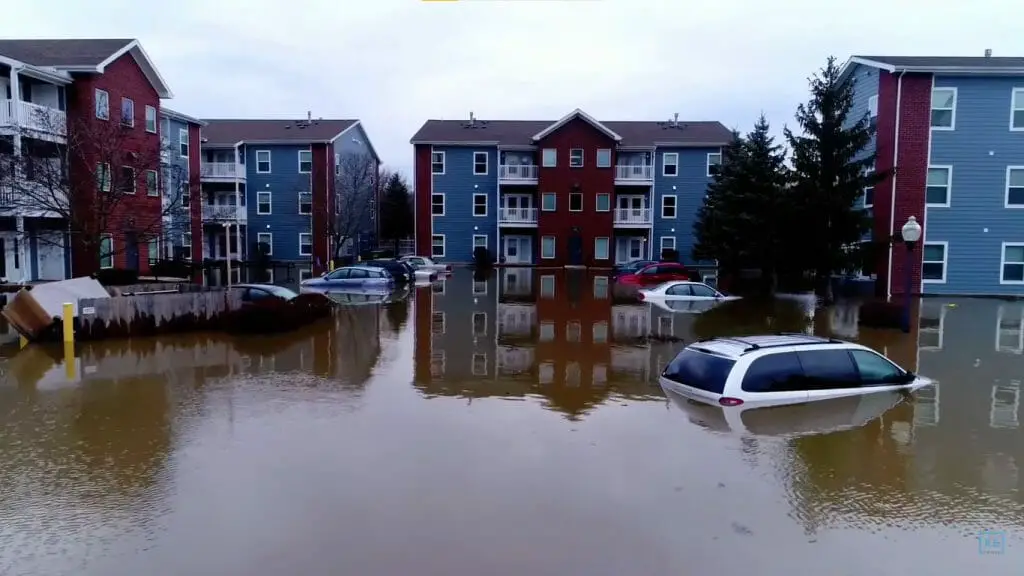
Elevation is the most effective way to protect your property from flood-related damages. It is better protected from unpredictable flooding conditions. Furthermore, thousands of dollars of flood damage can be prevented by simply building houses at higher elevations.
Certain flood insurance providers will only offer their services to buildings above the BFE.
The National Flood Insurance Program (NFIP) follows the guidelines set by FEMA and the BFE. The elevation of constructed buildings must follow the BFE to qualify for NFIP flood insurance. Private flood insurance providers have their own requirements, but buildings are generally required to comply with the BFE. What’s more, building above the BFE can lower flood insurance premiums.
Lower flood insurance premiums provide the benefit of lower insurance costs.
Depending on your insurance provider, buildings up to 3 feet above the BFE may reduce the annual insurance cost by 70%. To illustrate, for buildings within an AE zone, the average cost of flood insurance premiums is $2,147 at BFE elevation. Buildings in the same AE zone but located 3 feet above the BFE elevation only cost an average of $614.
The building above the BFE brings other benefits, such as higher property values and reduced flood damage.
Ways to Elevate your Building Above the Base Flood Elevation
Property owners must elevate their houses so that the lowest floor is above the base flood elevation.
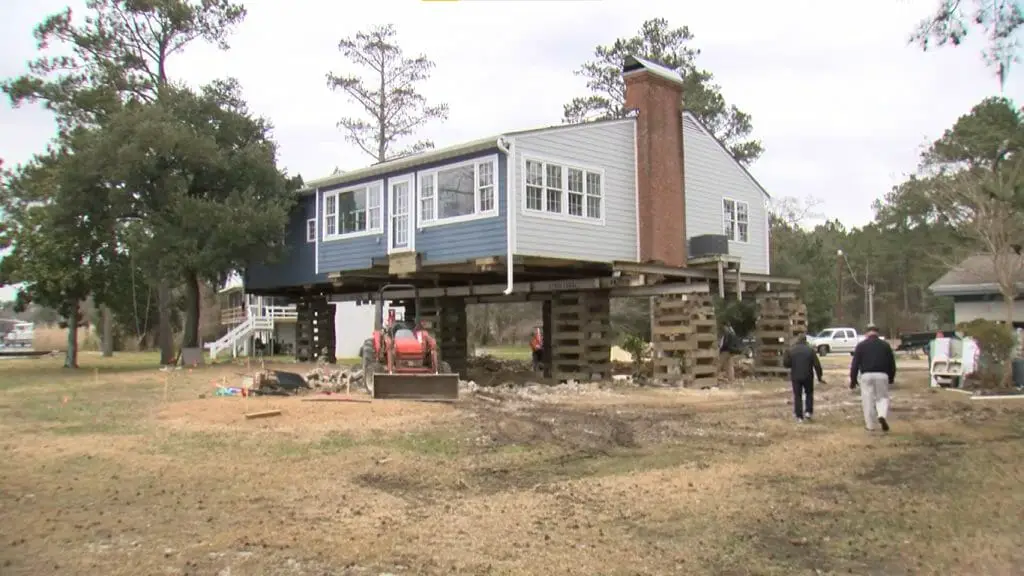
The local floodplain management ordinance will require the lowest floor to be elevated at or above the BFE if you’re constructing, repairing, or substantially improving the building. Raising the elevations is optional for other situations as long as it complies with the local flood safety standards. Still, it is strongly recommended to bring the elevation of your building to the BFE.
Some historical buildings are exempted from the BFE requirement during renovations.
Take note that these buildings are considered to be below flood levels. It typically has higher flood insurance premium costs. Furthermore, it is not considered to be structurally durable against flooding.
An alternate solution is available for buildings wherein only the lowest floor is not above the BFE.
The basement, or whichever one is the lowest floor, must be filled up. It must be sealed to become an additional foundation of the building and prevent water from entering underneath. No other changes to the building are necessary if this is the case.
Take a look at some of our related articles below.
References
[1] Elevating Your Home? What You Need to Know and Do – FEMA – www.fema.gov/press-release/20210318/elevating-your-home-what-you-need-know-and-do
Video References
REtipster
Jose Perez Local Realtor
Kill 3 News
WNCT-TV 9 On Your Side

